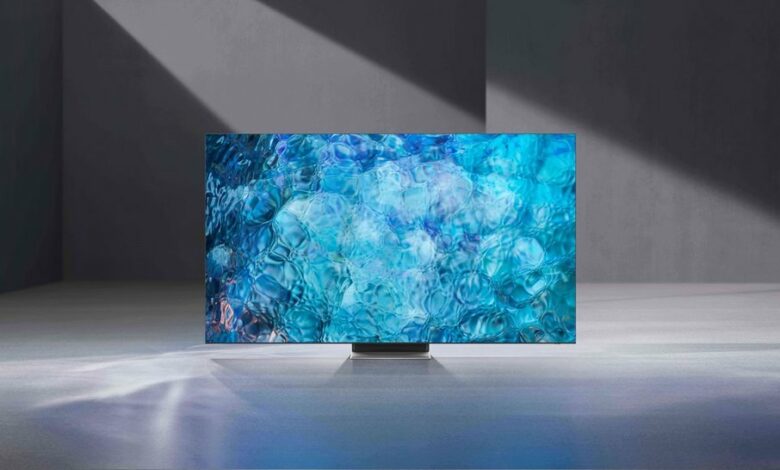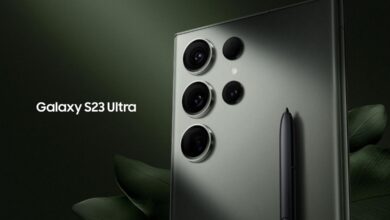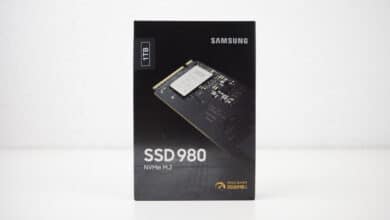
When Samsung announced to the world for the first time a few months ago that it now wanted to manufacture OLED TVs and panels itself, it caused quite a stir. This is hardly surprising in view of the impressive specs, which even put top models from the industry leader LG in the shade. Samsung wanted to outdo its rival especially in the areas of maximum brightness and longevity. Meanwhile, the release of the first models has been confirmed. It is supposed to be this year. However, first preview reports reveal that the TVs still have a serious Achilles’ heel, which could be the series’ undoing.
Release in May
The time is supposed to come in just under two months. Then Samsung wants to launch its first own OLED TV in stores. The first generation is to be available in two different sizes. In addition to a 55-inch version, a larger model with a 65-inch screen diagonal should also be available. There is not to be more choice for the time being. This does not only concern the size of the screen. There is also “only” 4K for the resolution. Who wants 8K, will have to reach willy-nilly to another TV.
Neo QLEDs are still flagships
Although OLED is actually considered the locking tip of the panel technology, Samsung’s upcoming devices are not supposed to be flagships. At least, the Koreans do not refer to them as such. Samsung’s Neo QLEDs are more likely to be considered top devices. They are supposed to perfect the world of LCD TVs. Samsung achieves this with quantum dots, which correspond to the Q in the name QLED. These are amplified with different colors to ensure higher contrasts, but also lifelike colors.
No maximum equipment in the OLED
Price-wise, the upcoming OLED TVs are supposed to play in a league of the QLEDs. Since the GQ65QN95 costs about 3,500 euros, we can therefore also expect about these prices for the OLED TVs. However, despite the same pricing policy, the features are supposed to be a bit more meager, at least compared to the counterparts based on QLED technology. This is not least due to the completely different technology. While the OLED TVs have the ports on the device itself, Samsung relies on a so-called one-connect box for its QLEDs. It is actually a pity that the South Koreans do not also use this technology for their OLEDs. After all, this would allow the naturally ultra-flat OLED panel to rest directly on the wall. The connection to the technology including the ports could then be established almost invisibly with a transparent cable.
QD OLED becomes OLED
Samsung seems to deliver very good results in terms of brightness. Thus, the manufacturer states that the OLEDs should be able to reach peak brightnesses of up to 1500 cd/m². However, you always have to take these values with a grain of salt. After all, it is enough to meet the specification as an “HDR1500 device” if the corresponding value is reached on just 10% of the entire panel for a few seconds. Only in practice will we be able to judge how well Samsung does in terms of screen brightness. Those who have been following Samsung’s OLED development for a while will wonder why the electronics company no longer advertises its series under the name QD OLED. Apparently, the addition is now dispensed with in order not to cause even more confusion on the television market, which is already opaque for many.
First generation with teething problems?
That all that glitters is not gold should unfortunately become clear to us with the new Samsung OLEDs. At least, this is what the experts from c’t have found out. They tested the new Alienware gaming monitor and came to a very good test result. However, a closer look revealed a small flaw. What does this have to do with Samsung? The manufacturer of gaming hardware uses the same pixel structure for its screen as Samsung wants to do for its OLED TVs.
Since the test team of c’t already had to hear disturbing artifacts in the monitor, we will probably see a similar picture in Samsung’s OLEDs. In practice, the testers observed ugly color fringes in the transitions, especially in content with significant brightness differences. You can see this very well in a video from the colleagues of heise online. Here, the problem is particularly evident with white text on an almost black background.
Quantum Dot technology with problems
Samsung was obviously very proud of the revolutionary technology when it presented its Quantum Dot (QD) technology. The manufacturer has supplemented the OLED technology with so-called subpixels. There are a total of four of them per pixel. However, the technology, which is used for the first time in the Alienware monitor, does not only win laurels in practice. Apart from the otherwise very good picture, said colors that line the edges are disturbing. By the way, the different colors of the QDs can be seen on these edges.
Depending on the orientation of the bright surface, they appear in green, red or blue. The biggest mystery in the whole story is certainly why Samsung wants to simply put the obviously flawed product on the market. After all, you would expect the quality control to meet the highest standards, especially from a gigantic company like Samsung. After the first Samsung Germany employees were able to put their hands on the devices, the first statements have been made.
The company emphasizes that the tested Alienware model is only a prototype. Accordingly, the company reserves the right to make further changes. Since the first Samsung OLEDs are supposed to be launched in May, Samsung will probably not be able to change anything about the hardware itself. After all, it can be assumed that thousands of OLED TVs have already been manufactured. We can only hope that they will not be thrown away and that Samsung will come up with a solution via a software update.




No replies yet
Neue Antworten laden...
Neues Mitglied
Beteilige dich an der Diskussion in der Basic Tutorials Community →